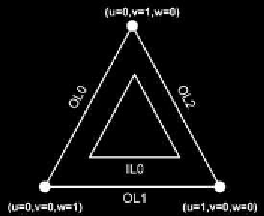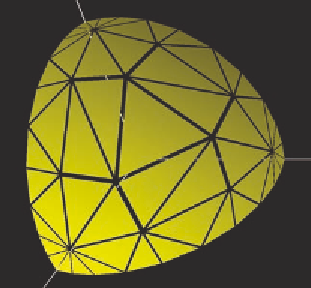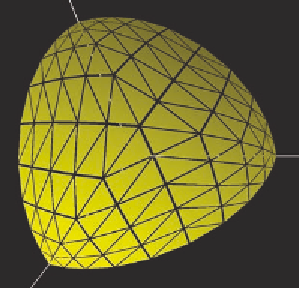Graphics Reference
In-Depth Information
Because this is the irst triangle-patern tessellation we
have seen, we should remind ourselves about the outer and
inner tessellation levels in this example. Figure 13.16 recalls
the meaning of outer and inner tessellation levels for trian-
gles; the first inner tessellation level controls the number of
subdivisions along each triangle except the outermost, and
the first three outer tessellation levels control the number
of subdivisions along the three outer edges. The examples
shown here use the tessellation levels rather conservatively,
but in an exercise you are encouraged to try out different
variations on these levels.
In the images created by this example, we can see the
effect of different tessellation levels. Figure 13.17 shows the sphere quadrant
with two different tessellation levels; on the left we have outer = 10 and inner =
5, while on the right we have outer = inner = 10. You can see that in both cases,
each outer edge has ten subdivisions while the inner edge (each line parallel to
an outer edge) of the left image has five subdivisions and the inner edge of the
right image has ten. In an exercise you are invited to experiment with using
different tessellation levels for the three outer edges of the octant.
When you include the radius in seting the tessellation levels as in the
TCS, you see that the larger the sphere radius is, the larger the tessellation level.
This gives you a level-of-detail capability that is illustrated in Figure 13.18.
Note that the individual triangles in the tessellations are of similar size across
all the images.
Figure 13.16.
The meaning of
tessellation levels for triangles.
Figure 13.17.
Two sphere octants with different tessellation levels: outer = 10, inner = 5.
(left); outer = inner = 10 (right).





